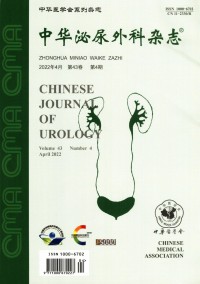输尿管镜碎石前预先放置输尿管支架的必要性:一项荟萃分析
Q4 Medicine
引用次数: 1
摘要
目的系统评价输尿管软镜碎石术前预置双j型支架的必要性。方法计算机检索PubMed、Cochrane Library、Embase、Scopus、万方、CNKI、VIP等数据库中术前预置双j型导尿管对输尿管软镜碎石效果的临床研究。检索时间为数据库建设至2018年11月。以下所有可能的组合被用于搜索:柔性输尿管镜、术前、双J型支架和结石。2名研究者独立进行文献筛选、质量评价和数据提取,使用统计软件RevMan5.3完成Meta分析。结果共筛选32项病例对照试验和14项随机对照试验,共纳入患者17 480例,其中实验组6 211例,对照组11 269例。meta分析结果显示,实验组术后结石整体清除率优于对照组(OR=1.69, 95%CI 1.37 ~ 2.08, P<0.05)。在术后肾结石摘除率方面,实验组优于对照组(OR=1.67, 95%CI 1.41 ~ 1.99, P<0.05)。在输尿管结石术后切除率方面,两组比较差异无统计学意义(OR=1.71, 95%CI 0.91-3.20, P=0.10)。实验组输尿管软镜输尿管鞘植入术成功率较高(OR=5.77, 95%CI 3.32 ~ 10.31, P<0.05)。对照组被动使用球囊扩张率较高(OR=0.23, 95%CI 0.15 ~ 0.35, P<0.05)。术中并发症发生率实验组较对照组低(OR=0.56, 95%CI 0.38 ~ 0.84, P=0.004)。对于术后并发症的发生率,实验组也较低(OR=0.64, 95%CI 0.45-0.90, P=0.01)。对照组手术时间较长(MD=-4.95, 95%CI -8.90—1.01,P=0.01)。结论预置双j型导尿管可提高输尿管软镜碎石治疗肾结石后的结石取出率,提高输尿管软镜通路鞘植入术成功率,降低输尿管球囊扩张器的使用率,减少术中术后并发症的发生,缩短手术时间。关键词:尿路结石;灵活ureteroscopic;双J型支架;荟萃分析本文章由计算机程序翻译,如有差异,请以英文原文为准。
The necessity of presetting ureteral stents before ureteroscopic lithotripsy: a Meta-analysis
Objective
To systematically evaluate the necessity of presetting double-J stent before flexible ureteroscope lithotripsy.
Methods
Computer retrieved clinical studies on the effect of preoperative presetting double-J-catheter on flexible ureteroscope lithotripsy in PubMed, Cochrane Library, Embase, Scopus, Wan fang, CNKI and VIP databases were reviewed. The retrieval time was from the database construction to November 2018. All of the possible combinations of the following terms were used for the search: flexible ureteroscopic, preoperative, double J stent, and calculus. Two researchers independently conducted literature screening, quality evaluation and data extraction, and completed Meta analysis by using statistical software RevMan5.3.
Results
Thirty-two case-control trials and 14 randomized controlled trials were screened, with a total of 17 480 patients, including 6 211 patients in the experimental group and 11 269 patients in the control group. The results of meta-analysis showed that the experimental group was superior to the control group in term of the overall postoperative stone clearance rate (OR=1.69, 95%CI 1.37-2.08, P<0.05). In terms of postoperative kidney stone removal rate, the experimental group was superior to the control group (OR=1.67, 95%CI 1.41-1.99, P<0.05). In terms of the removal rate of ureteral calculi after surgery, there was no significant difference between the two groups (OR=1.71, 95%CI 0.91-3.20, P=0.10). The success rate of flexible ureteroscope access sheath implantation was higher in the experimental group (OR=5.77, 95%CI 3.32-10.31, P<0.05). The rate of passive usage balloon dilation in the control group was higher(OR=0.23, 95%CI 0.15-0.35, P<0.05). For the incidence of intraoperative complications, the experimental group was lower (OR=0.56, 95%CI 0.38-0.84, P=0.004). For the incidence of postoperative complications, the experimental group was also lower(OR=0.64, 95%CI 0.45-0.90, P=0.01). The operation time of the control group was longer(MD=-4.95, 95%CI -8.90--1.01, P=0.01).
Conclusions
Presetting double-J-catheter can improve the stone removal rate after flexible ureteroscope lithotripsy for the treatment of kidney stone, improve the success rate of flexible ureteroscope access sheath implantation, reduce the utilization rate of ureteral balloon dilator, reduce the incidence of intraoperative and postoperative complications, and shorten the operation time.
Key words:
Urinary calculus; Flexible ureteroscopic; Double J stent; Meta-analysis
求助全文
通过发布文献求助,成功后即可免费获取论文全文。
去求助
来源期刊

中华泌尿外科杂志
Medicine-Nephrology
CiteScore
0.10
自引率
0.00%
发文量
14180
期刊介绍:
Chinese Journal of Urology (monthly) was founded in 1980. It is a publicly issued academic journal supervised by the China Association for Science and Technology and sponsored by the Chinese Medical Association. It mainly publishes original research papers, reviews and comments in this field. This journal mainly reports on the latest scientific research results and clinical diagnosis and treatment experience in the professional field of urology at home and abroad, as well as basic theoretical research results closely related to clinical practice.
The journal has columns such as treatises, abstracts of treatises, experimental studies, case reports, experience exchanges, reviews, reviews, lectures, etc.
Chinese Journal of Urology has been included in well-known databases such as Peking University Journal (Chinese Journal of Humanities and Social Sciences), CSCD Chinese Science Citation Database Source Journal (including extended version), and also included in American Chemical Abstracts (CA). The journal has been rated as a quality journal by the Association for Science and Technology and as an excellent journal by the Chinese Medical Association.
 求助内容:
求助内容: 应助结果提醒方式:
应助结果提醒方式:


